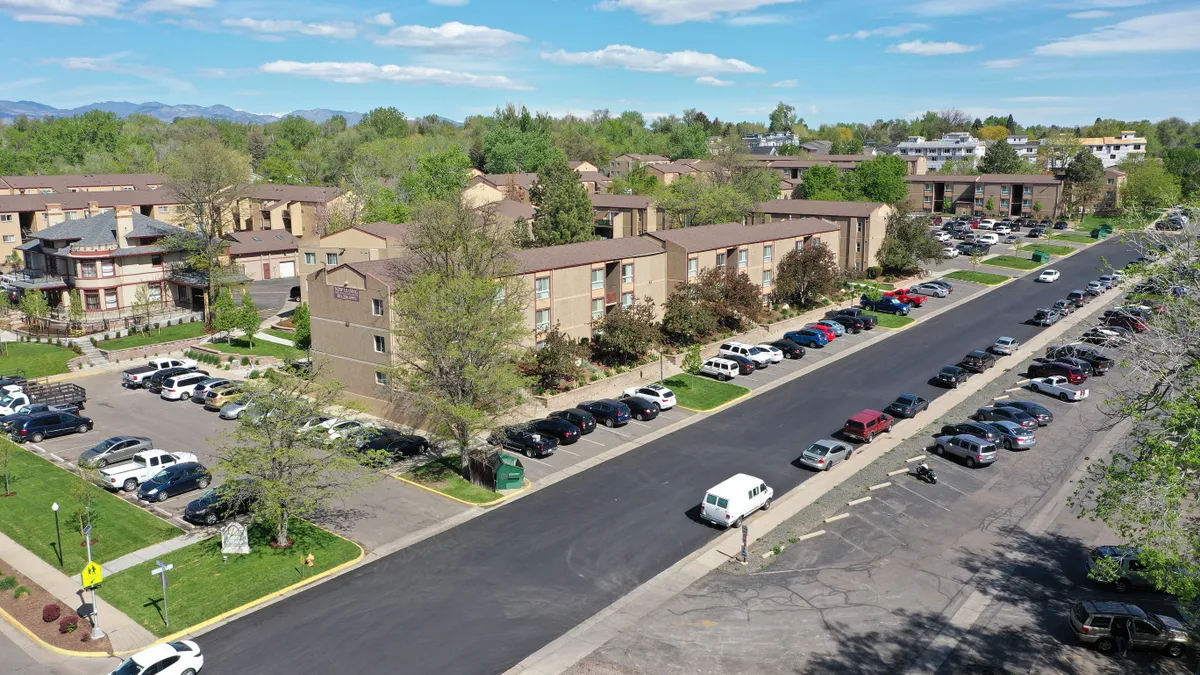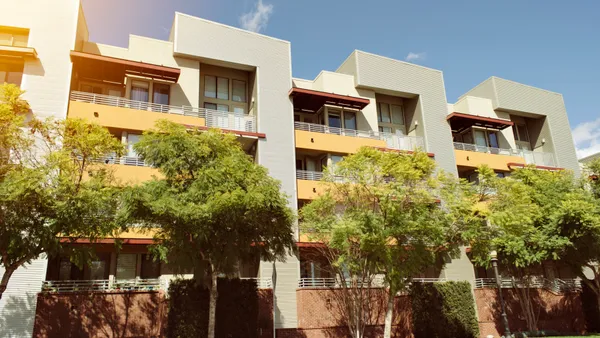Despite recent market volatility, Trion Properties — a multifamily investment sponsor and private-equity real estate firm based in West Hollywood, California and Miami — continues to buy apartments.
Last week, Trion, which seeks value-add deals, acquired two properties totaling 297 units — Osprey on the Bluffs and Heron on the Bluffs — in the Southside submarket of Savannah, Georgia for $57.65 million.
The deals epitomize the company’s aggressive stance: Even though there may be some price deterioration, managing partner Max Sharkansky isn’t afraid to lock-up properties that meet Trion's investment criteria.
”You're never going to time the exact day of the bottom,” Sharkansky told Multifamily Dive. “It's possible — maybe even probable — that the market continues to adjust a little bit down. But, I don't think it will be much further down.”
Even if an asset loses 1% or 2% of value through the closing process, Sharkansky isn’t concerned: “It's not like we're trading stocks on a daily basis,” he said. “On a three- to five-year hold, it’s irrelevant.”
Here, Sharkansky talks with Multifamily Dive about volatility in the capital markets, diminished competition for apartment properties and the appeal of Florida.
This interview has been edited for brevity and clarity.
MULTIFAMILY DIVE: What are you seeing in the transaction market right now?
MAX SHARKANSKY: The capital markets are in flux. A lot of people in the lending community are pulling back, tightening their underwriting standards and getting more conservative. The same goes for the equity community,

including owners/operators, investors and fund managers. Everyone is just being a little bit more careful — as they should be. Their thoughts are that interest rates can get significantly higher. That would be good in the long term with the consumer price index growing out of control. But in the short term, it would have a negative impact on the economy — especially real estate values because they are so interest-rate sensitive.
Has competition diminished for value-add assets?
All the competition has backed off, but we are still in the market. We're seeing price corrections of around 10%, depending on the quality of the asset and the quality of the location. If it's a lower quality, like a 1970s or older property, then you're going to have more than a 10% correction. If it's a higher-quality asset and it's in a really good location, then it'll be a less than 10% correction, maybe more like 7% or 8%.
Do you think some owners will face risks refinancing with rates rising?
I think people paid big numbers on value-add deals and they were underwriting aggressively. Those who put high leverage on them are going to have a really hard time refinancing or selling at a profit. If you're putting 75% loan-to-cost bridge debt on something that you underwrote at 4.25% or 4.50% cap rate post-renovation and you're banking on the rent growth and interest rates go to more than 6%, you're going to have a really hard time refinancing.
On the other hand, fundamentals are still strong. What are you seeing?
It's unbelievable. We just bought our first deal in Miami. And the rents are already significantly higher than what we underwrote when we put it under contract. We're running it at 99.5% occupancy, and our renewals for July and August are at 100%. So the only vacancies we have are what we inherited from the seller. We’ve only owned it for a couple of months, but no one has left yet. And people are paying 20%-plus for renewals.
What is this rent growth doing to the area?
South Florida has had so much migration, and a lot of those people are high-income. Brickell and Miami Beach — the center of Miami — used to be pretty affordable relative to New York, Los Angeles and San Francisco. Now those rents have effectively doubled through COVID-19.
And a lot of those people who lived in Miami are going out to the suburbs. So you've got all the people that used to live in Brickell and the center of Miami getting pushed out to the suburbs, and you're banking on that growth going forward. The bad news is that people living in these close-in suburbs will have to move elsewhere.
Click here to sign up to receive multifamily and apartment news like this article in your inbox every weekday.











